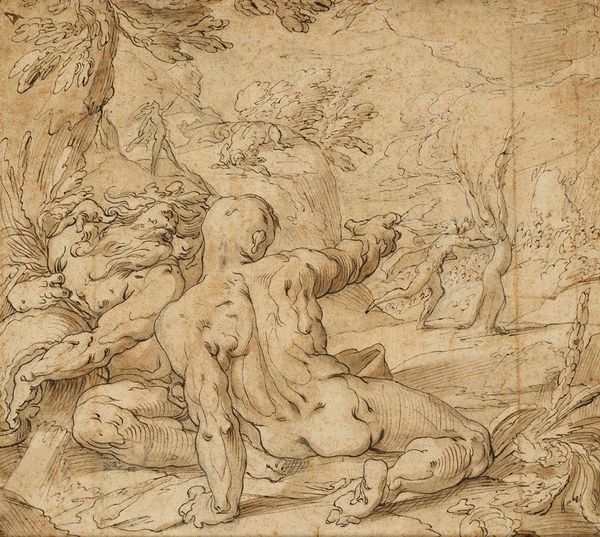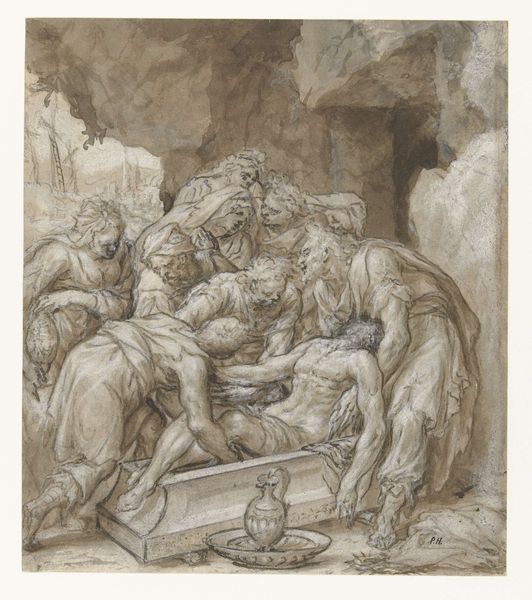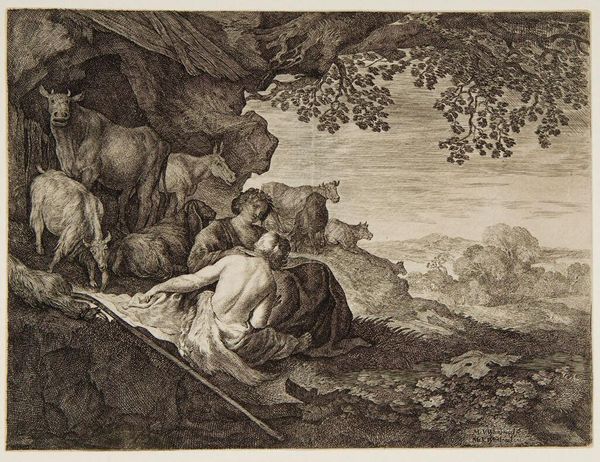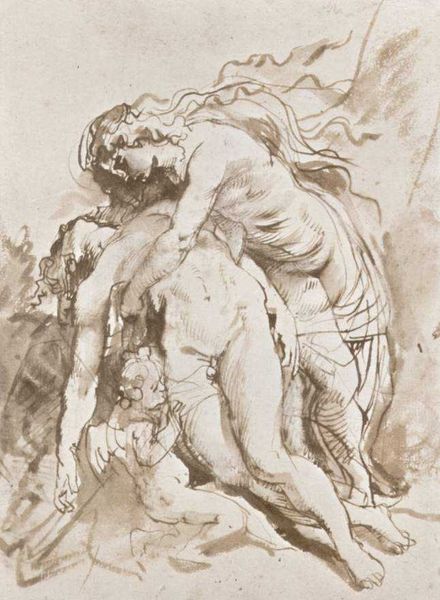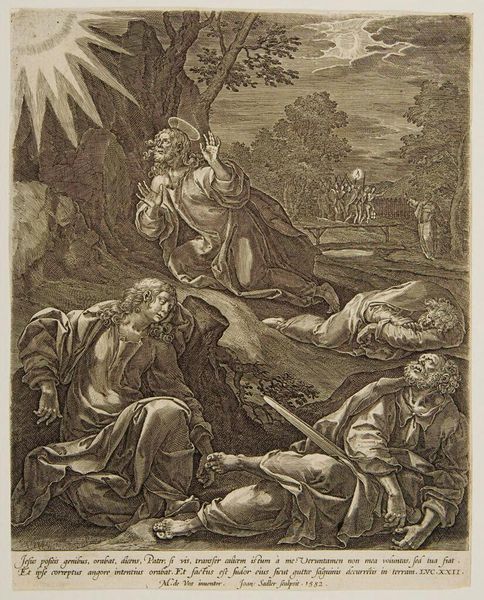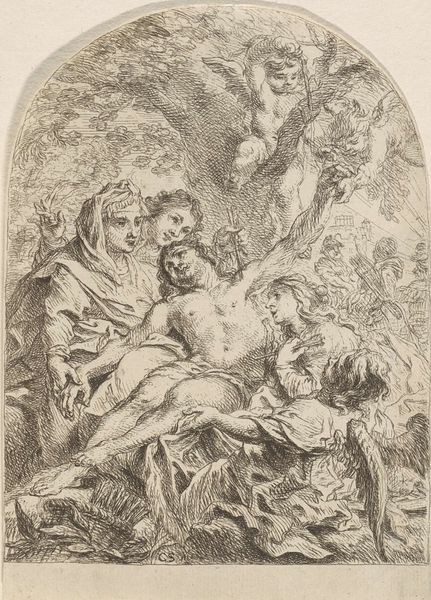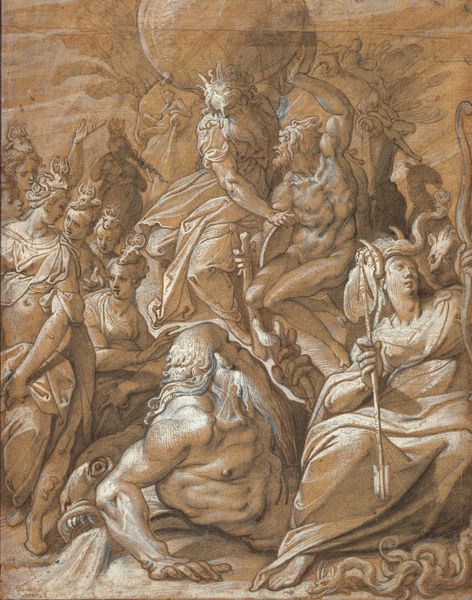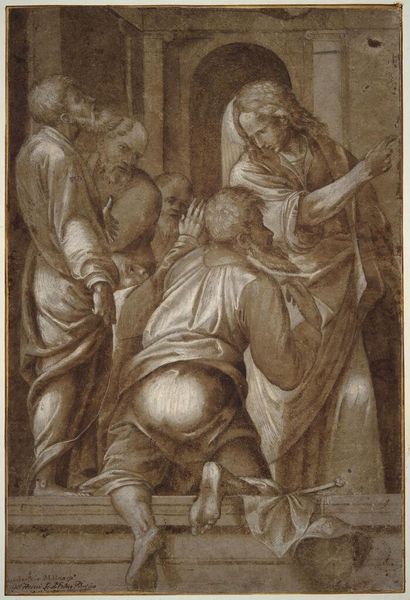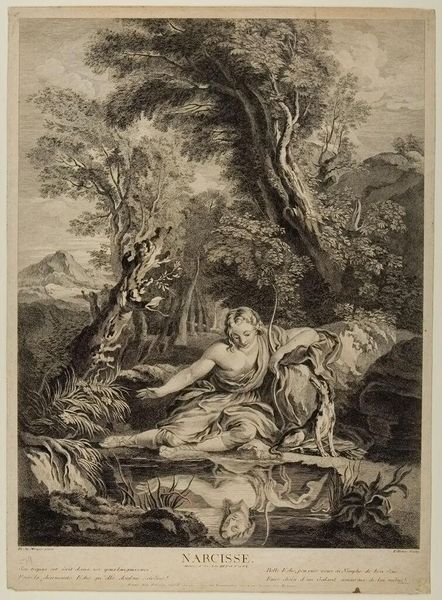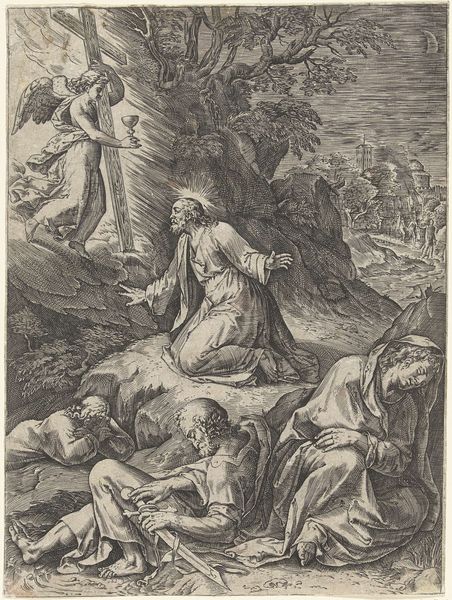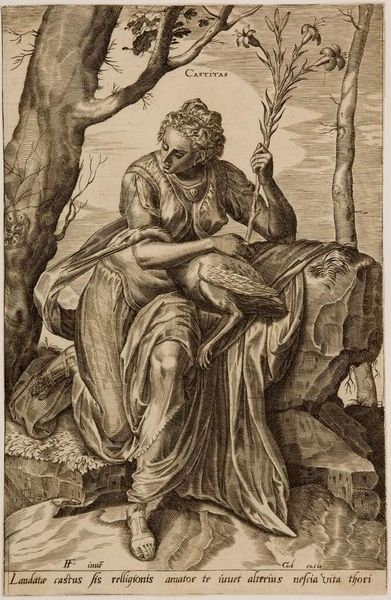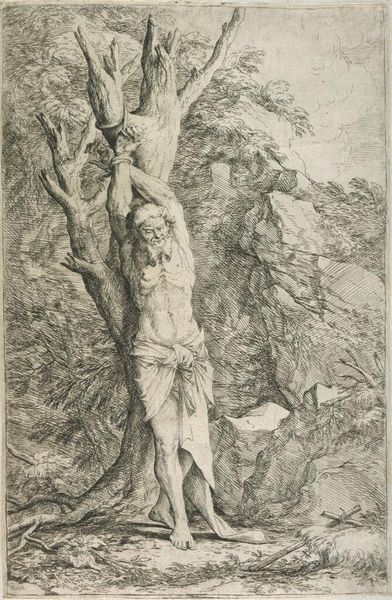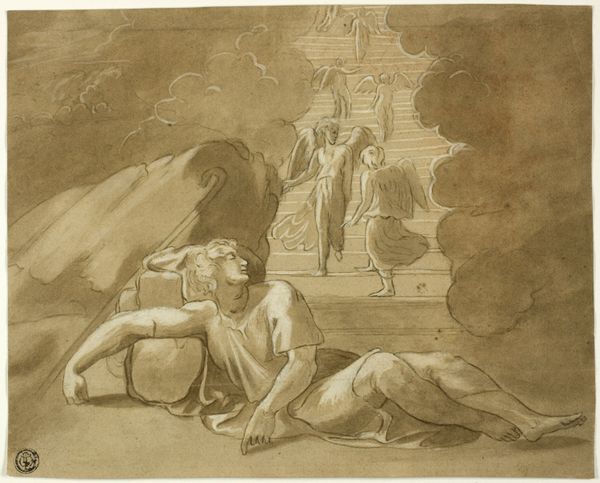
drawing, charcoal
#
drawing
#
charcoal drawing
#
mannerism
#
figuration
#
oil painting
#
mythology
#
charcoal
#
history-painting
#
charcoal
Copyright: Public domain
Curator: This evocative drawing, rendered in charcoal, comes to us from Paolo Veronese, around 1552, and is titled "Temptation of St. Anthony." Editor: It immediately strikes me as dramatically staged. The dynamism, with its off-kilter positioning of the central figure, lends a theatrical flair. Curator: Indeed. Observe how Veronese has structured the composition around a powerful diagonal axis, running from the upper right corner down to the saint's prostrate form. This reinforces the very physical struggle taking place. The dense network of charcoal lines emphasizes the Mannerist aesthetic. Editor: Thinking about the physical process here, the application of charcoal – how it allows for broad strokes that create atmosphere as well as finer lines defining form – feels central to the image’s emotional impact. What would have determined his access to charcoal at this point, what grade he used? Was it locally sourced? Curator: An interesting point. The material supports the formal design. The relatively loose handling of the charcoal, and its capacity for chiaroscuro, effectively amplifies the saint's torment. The work certainly invites interpretations of a semiotic nature, especially within the framework of Christian iconography. Editor: Absolutely, and it underscores the labor involved, the active choice of using such raw, easily manipulated material that leaves residue with even slight movement, to depict the spiritual struggle – that speaks volumes about his own position within the art world and artistic practice. The very idea of "temptation" becomes tactile through the visible application of medium. Curator: I am most captivated by Veronese's control over form, even within apparent chaos. How lines converge and diverge, guiding the eye, even when rendering scenes of internal, spiritual conflict. Editor: To see such intensity expressed through readily accessible materials is striking. Considering it in a lineage of makers working with what they have readily at hand – I keep considering how the cost and accessibility affected the creative possibilities. Curator: A different perspective, no doubt. For me, it is the very mastery of visual language within the work’s form and style that arrests my attention, despite it depicting a moment of human weakness. Editor: And for me, understanding art starts with acknowledging the hands that shaped it. It's about more than just the narrative; it's about the physical act of creation and its broader implications.
Comments
No comments
Be the first to comment and join the conversation on the ultimate creative platform.
